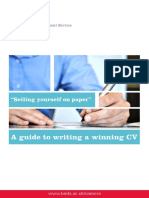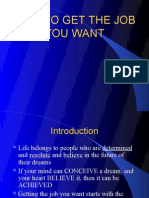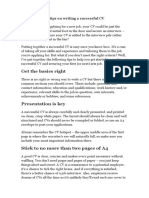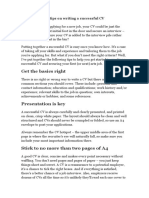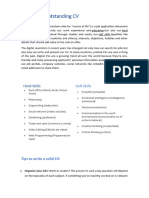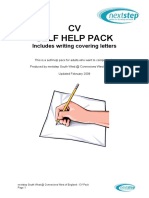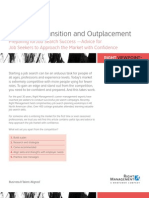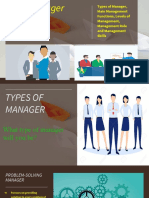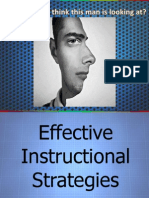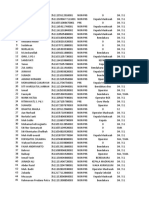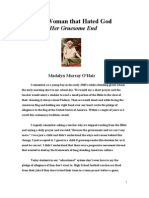0% found this document useful (0 votes)
103 views16 pagesHow To Make An Eeficient CV
The document provides guidance on creating an efficient CV in 5 stages:
1) Identifying the client's needs by thoroughly researching the job requirements.
2) Knowing what you have to offer by assessing your skills in areas like specialist skills, business skills, self-reliance, and people skills.
3) Making the connection between what the employer needs and what you have to offer in your CV and application materials.
Uploaded by
ghanwat_amolCopyright
© Attribution Non-Commercial (BY-NC)
We take content rights seriously. If you suspect this is your content, claim it here.
Available Formats
Download as DOC, PDF, TXT or read online on Scribd
0% found this document useful (0 votes)
103 views16 pagesHow To Make An Eeficient CV
The document provides guidance on creating an efficient CV in 5 stages:
1) Identifying the client's needs by thoroughly researching the job requirements.
2) Knowing what you have to offer by assessing your skills in areas like specialist skills, business skills, self-reliance, and people skills.
3) Making the connection between what the employer needs and what you have to offer in your CV and application materials.
Uploaded by
ghanwat_amolCopyright
© Attribution Non-Commercial (BY-NC)
We take content rights seriously. If you suspect this is your content, claim it here.
Available Formats
Download as DOC, PDF, TXT or read online on Scribd
/ 16
